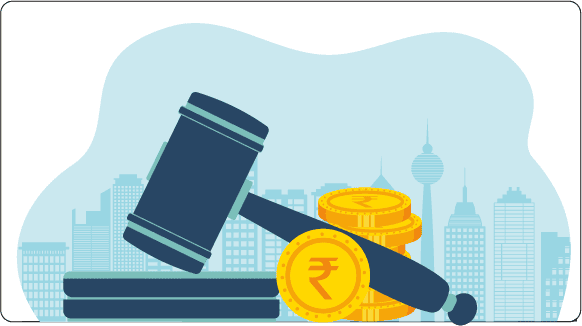The Evolution of Hyderabad

Hyderabad, the capital of Telangana and the de jure (official) capital of Andhra Pradesh, is a historical site known for its temples, mosques, monuments, etc. It occupies a large portion of the Deccan plateau. The Musi River covers the northern part of the city.
As per the Census of India, 2011, Hyderabad is the fourth-most populous city of the nation.
According to one popular legend the founder of the city of Hyderabad, Muhammad Quli Qutb Shah, named it Bhagya-Nagar after Bhagmati, a nautch (dancing girl) to whom he got wedded. She got converted to Islam and took the title Hyder Mahal. The city was perhaps named Hyderabad in her honour.
There is a lot of history of Hyderabad. In this blog, we will go through the history of Hyderabad.
The Evolution of Hyderabad
Muhammad Quli Qutb Shah, the fifth ruler of the Qutb Shahi dynasty of Golkonda that ruled the Golconda Sultanate in the northern Deccan Plateau from 1512 AD to 1687 AD. In 1591 he founded the city of Hyderabad. He thought of extending the capital city beyond the fortified Golconda. The city was annexed by the Mughals in 1687. The Mughal emperor Farrukhsiyar appointed Mubariz Khan as the Governor of Hyderabad. He built the city wall around Hyderabad to protect the city from both internal and external threats. Next, the city of Hyderabad served as the capital of the Asaf Jahis dynasty from 1769 to 1948. The Nizams ruled the city when India was ruled by the British Raj.
When India received Independence in 1947, the Nizam wanted to remain independent rather than becoming a part of India or the newly formed Pakistan. However, the Indian National Congress and the State Congress of Hyderabad wared against the Nizam VII in the year 1948. After that, the Indian army took control of the city of Hyderabad. The Nizam signed an Instrument of Accession and he was, thus, made the ‘Princely Governor’ or ‘Rajpramukh’ of the state.
The famous city wall surrounding the entire city of Hyderabad was constructed to protect the city from foreign or local invasion. Abul Hasan Qutb Shah, the last Sultan of the Qutb Shahi dynasty, initiated its construction. It was continued during the time of Mubariz Khan, the Mughal governor of the Deccan. Ultimately, it was completed during the rule of Nizam I.
The wall was roughly 18 ft. high and 8 ft. wide at different parts. Scholars of history say that the wall differed in thickness in different areas. A few spots were wide enough for guards, while others were wide enough to accommodate horses. At vital places, where there could be dangers, there was an opening for cannons to be mounted. There were initially 13 gates known as Darwajas. You could also find small entrances called khidkis (windows). Much of the wall was destroyed and only two gates Purana Pul Darwaza and Dabeerpura Darwaza remain.
- Purana Pul Darwaza (surviving) at Purana Pul.
- Dabeerpura Darwaza (surviving) at Dabirpura.
- Chaderghat Darwaza at Chaderghat.
- Yakutpura Darwaza at Yakutpura.
- Aliabad Darwaza at Aliabad.
- Champa Darwaza
- Lal Darwaza
- Gowlipura Darwaza
- Fateh Darwaza
- Doodhbowli Darwaza
- Dilli Darwaza
- Mir Jumla Darwaza
- Afzal Darwaza
As a city, Hyderabad has grown both in terms of population and land area. However, this growth is not a planned one. The streets and local roads were congested. Thus, the Inner Ring Road was built. It is a 50-kilometre-long road in Hyderabad. It was constructed to decongest city streets and give way for trucks and other business vehicles.

It is expected that the growth can be even unmanageable in the near future. To give the city a better shape and structure, a City Master Plan 2031 has been proposed.
Proposals in the City Master Plan 2031 are:
- Ten new flyovers
- 13 new bridges
- 7 new under bridges
- Multi parking facilities
Find more about investment opportunity in Hydrabad
Conclusion
It is expected that we can see a better picture of Hyderabad in the future. The scenes and scenes of the city are quite admiring. Only a little planning would make the city a better place. Alright, this is all for today. We will meet soon in the next blog, discussing a new city.
Till then keep sharing the article if you find it helpful. Also, drop your concerns at info@roodland.com. Your concerns are ours too. We will reply soon with a promising solution to your problem. So, drop the mail. Let’s start building a bond between us.

Unlocking the Power of Feng Shui in Real Estate: A Guide to Harmonizing Your Home
In this blog, we have highlighted the evolution of the city of Hyderabad. We have also touched upon the Master...
What is External Development Charges (EDC)?
In this blog, we have highlighted the evolution of the city of Hyderabad. We have also touched upon the Master...
Importance of Highway for Indian Real Estate Sector
In this blog, we have highlighted the evolution of the city of Hyderabad. We have also touched upon the Master...
Ways to Manage Traffic in Metro City
In this blog, we have highlighted the evolution of the city of Hyderabad. We have also touched upon the Master...
Top Ambitious Infrastructure Projects Coming up in Ahmedabad
In this blog, we have highlighted the evolution of the city of Hyderabad. We have also touched upon the Master...
Quick and Easy Construction Technique Using GFRG Panels
In this blog, we have highlighted the evolution of the city of Hyderabad. We have also touched upon the Master...
Which City is Best for Settlement After Retirement?
In this blog, we have highlighted the evolution of the city of Hyderabad. We have also touched upon the Master...

















